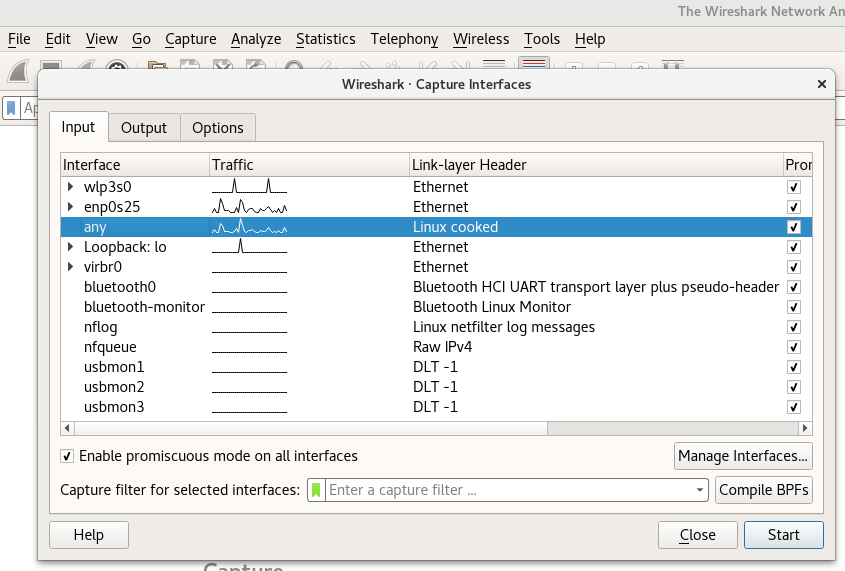How To Install Pcap In Fedora
How do I Install Fedora 31? For Fedora Lovers, Fedora 31 is out. It comes with plenty of new features and improvements over previous releases. This guide will cover step by step Installation of Fedora 31 with screenshots. The installation can be on a Virtual environment such as VirtualBox, VMware, KVM or a dedicated machine such as a Laptop or a server. Step 1: Download Fedora 31 ISOIn this tutorial, we will do the installation of Fedora 31 Workstation. Download the ISO file from page.
How To Install Pcap In Fedora 10
If you want Fedora Server, download from the page. Are you in dilemma?. Fedora Workstation – Fedora Workstation is a polished, easy to use operating system for laptop and desktop computers, with a complete set of tools for developers and makers of all kinds.
Fedora Server – Fedora Server is a powerful, flexible operating system that includes the best and latest datacenter technologies. It puts you in control of all your infrastructure and services.Step 2: Create a bootable USB deviceOnce you download your pick, you can create bootable USB if the installation is done on a Laptop or physical server hardware. For Linux/Unix users, dd command can be used for this. First, identify the name of your USB device partition. Then run the following command replacing sdX with the name of your USB, e.g sdb. $ sudo dd if=/path/to/image.iso of=/dev/sdX bs=8M status=progress oflag=directWait until the command completes then proceed to boot your system from USB stick.
Installation on VirtualBoxFor installations done on a Virtual environment such as VirtualBox, you need to attach ISO image during VM creation and it will boot from it automatically.Create a new VM – give it a name and select OS type.Set memory allocation for the VM.Create new virtual disk for the instance.Select disk file type – default for VirtualBox is VDIChoose dynamic allocation to benefit from thin provisioning.Give virtual hard disk a name and size.Your VM should be defined.Click on “ Start” to choose installation ISO image.Navigate to folder with the ISO file for Fedora 31. Click “ Open” to attache ISO file to your Fedora 31 virtual machine.The “ Start” button is used to initiate Fedora 31 installation on VirtualBox. Step 3: Begin Fedora 31 Installation processThe first screen will ask you to start Fedora 31 Live installation.Hit enter to get to the next screen. Choose “ Install to Hard Drive“Select installation language and hit Continue button.Select correct Keyboard and Timezone for your region, and go to choose “ Installation Destination“.Since I’m doing installation on a VM, I’ll go with “ Automatic” storage configuration.If you’re in for advanced storage configuration like a separate partition for swap, /var, /tmp, or RAID configuration e.t.c, then select Custom under Storage Configuration. When done, click “ Done” at the top of the screen.Begin installation and wait for it to complete.Remove installation media, for Virtual Environment, detach ISO file and reboot your system.Set your User information and username.Provide strong password and confirm for your account.You have completed installation of Fedora 31 and is ready for use.Click “ Start Using Fedora” to login and enjoy Fedora 31 new features.Other Fedora articles are on the way. Subscribe to our newsletter and follow us on social media pages to receive instant updates.Customize Bash –.
Tcpdump is a command line network sniffer, used to capture network packets. When you have only command line terminal access of your system, this tool is very helpful to sniff network packets. It has so many options:. you can see the packet dump in your terminal,. you can also create a pcap file (to see the capture in wireshark),. you can create filter to capture only required packets like ftp or ssh etc.

you can directly see the capture of a remote system in any other Linux system using wireshark, for more detail click. so many other options available,.tcpdump man pageWhen you create a pcap file using tcpdump it will truncate your capture file to shorten it and you may not able to understand that. I am writing this post, so that you can create a pcap file effectively.
You can use following command to capture the dump in a file: tcpdump -s 0 port ftp or ssh -i eth0 -w mycap.pcapIn above command-s 0 will set the capture byte to its maximum i.e. 65535, after this capture file will not truncate.-i eth0 is using to give Ethernet interface, which you to capture. Default is eth0, if you not use this option.port ftp or ssh is the filter, which will capture only ftp and ssh packets. You can remove this to capture all packets.-w mypcap.pcap will create that pcap file, which will be opened using wireshark.wireshark.orgNow I think, you can play with the command as per your need.
Most Popular Articles
- Forticlient Vpn 64 Bit Windows 7
- Digimon World 2 For Android
- Ismael Serrano Rapidshare
- Psx Horror Games
- 15 P44 Motherboard Drivers
- Star Defender 1
- Kovacq Hilda 3
- Ntlite License
- Tutorial Finance Pdf
- Driver Usb 2.0 Wlan Tp-link Tl-wn322g
- Izotope Ozone Vst Dx Rtas Htdm V4.01 Incl Keygen-air [h33t][mambo04]
- Game Adder Xbox 360
- Magix Midi Studio
- Presto Mr Photo Software
- Elcomsoft Wireless Security Auditor Serial Code Keygen
- Celtx Art Packs Free Download
- Datacolor Spyder3elite Rapidshare
- Housie Tambola Game Software
- Hack 3g Usb Modem Internet
- Ff7 Pc Serial Code
- Tax Title And License Calculator Wisconsin Map
- Battery Saver Software For Laptop For Windows 7
- Wonder Photo Collage Studio 4.2.11.20
- Compaq Evo N1020v Drivers